
Thick as a Brick is the fifth studio album by the British rock band Jethro Tull, released on March 3, 1972. The album contains a continuous piece of music, split over two sides of an LP record, and is a parody of the concept album genre. The original packaging, designed like a newspaper, claims the album to be a musical adaptation of an epic poem by fictional eight-year-old genius Gerald Bostock, though the lyrics were actually written by the band's frontman, Ian Anderson.
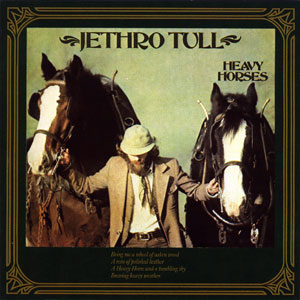
Heavy Horses is the eleventh studio album by British progressive rock band Jethro Tull, released on 10 April 1978.

A is the 13th studio album by British rock band Jethro Tull. It was released on 29 August 1980 in the UK and 1 September of the same year in the United States.

Too Old to Rock 'n' Roll: Too Young to Die! is the ninth studio album released by British band Jethro Tull, recorded in December 1975 and released in 1976. It is the first album to include bassist John Glascock who also contributes with backing vocals. Too Old to Rock 'n' Roll: Too Young to Die! is the last Jethro Tull concept album, which follows the story of Ray Lomas, an ageing rocker who finds fame with the changes of musical trends. It was Jethro Tull's only album of the 1970s not to achieve Gold certification.
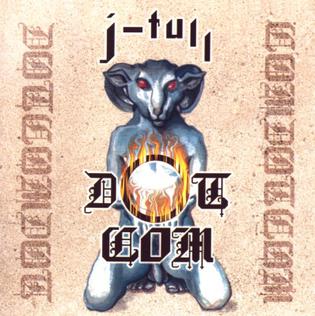
J-Tull Dot Com is the 20th studio album by the British band Jethro Tull, released in 1999 on Papillon, the Chrysalis Group's late 1990s heritage record label. It was released four years after their 1995 album Roots to Branches and continues in the same vein, marrying hard rock with Eastern music influences. It is the first album to feature Jonathan Noyce on bass, who would remain with the band until 2007 in Jethro Tull's longest ever unchanged line-up. This was the last Jethro Tull album to feature all original, new material for 23 years, although the band did release a Christmas album in 2003, which contained a mixture of new material, re-recordings of Tull's own suitably themed material and arrangements of traditional Christmas music.

Roots to Branches is the 19th studio album by the British band Jethro Tull released in September 1995. It carries characteristics of Tull's classic 1970s progressive rock and folk rock roots alongside jazz and Arabic and Indian influences. All songs were written by Ian Anderson and recorded at his home studio. This is the last Tull album to feature Dave Pegg on the bass, and the first to feature keyboardist Andrew Giddings as an official band member, although he had contributed to Catfish Rising (1991) on a sessional basis. As a result, the album notably features the five longest serving members to date in Jethro Tull’s history. It was also the final Tull album to be released through long-time label Chrysalis Records.

Stand Up is the second studio album by British rock band Jethro Tull, released in 1969. It was the first Jethro Tull album to feature guitarist Martin Barre, who would go on to become the band's longtime guitarist until its initial dissolution in 2012. Before recording sessions for the album began, the band's original guitarist Mick Abrahams departed the band as a result of musical differences with frontman and primary songwriter Ian Anderson; Abrahams wanted to stay with the blues rock sound of their 1968 debut, This Was, while Anderson wished to add other musical influences such as folk rock.

Minstrel in the Gallery is the eighth studio album by British rock band Jethro Tull, released in September 1975. The album sees the band going in a different direction from their previous work War Child (1974), returning to a blend of electric and acoustic songs, in a manner closer to their early 1970s albums such as Benefit (1970), Aqualung (1971) and Thick as a Brick (1972). Making use of a newly constructed mobile recording studio commissioned and constructed specifically for the band, the album was the first Jethro Tull album to be recorded outside of the UK, being recorded in tax exile in Monte Carlo, Monaco.
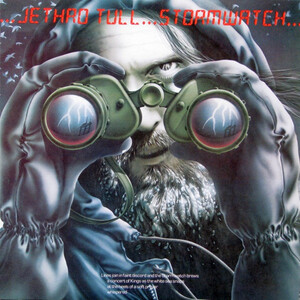
Stormwatch is the twelfth studio album by progressive rock band Jethro Tull, released in September 1979. The album is often considered the last in a trio of folk rock albums released by the band at the end of the 1970s, alongside Songs from the Wood (1977) and Heavy Horses (1978). The album's themes deal mostly with the environment, climate and seaside living, and were heavily inspired by the Isle of Skye in Scotland, where frontman Ian Anderson had recently purchased property.

War Child is the seventh studio album by Jethro Tull, released in October 1974. It was released almost a year and a half after the release of A Passion Play. The turmoil over criticism of the previous album surrounded the production of War Child, which obliged the band to do press conferences and explain their plans for the future.

Benefit is the third studio album by the British rock band Jethro Tull, released in April 1970. It was the first Tull album to include pianist and organist John Evan – though he was not yet considered a permanent member of the group – and the last to include bass guitarist Glenn Cornick, who was fired from the band upon completion of touring for the album. It was recorded at Morgan Studios, the same studio where the band recorded its previous album Stand Up; however, they experimented with more advanced recording techniques.
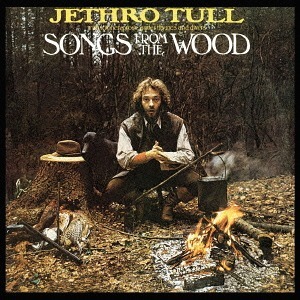
Songs from the Wood is the tenth studio album by British progressive rock band Jethro Tull, released on 11 February 1977 by Chrysalis Records. The album is considered to be the first of three folk rock albums released by the band at the end of the 1970s: Songs from the Wood,Heavy Horses (1978) and Stormwatch (1979).

Under Wraps is the 15th studio album by the band Jethro Tull, released in 1984. The songs' subject matter is heavily influenced by bandleader Ian Anderson's love of espionage fiction. It was controversial among fans of the band due to its electronic/synthesizer-based sound, particularly the use of electronic drums. Dave Pegg has been quoted as saying that the tracks cut from the sessions for Broadsword and the Beast would have made a better album, while Martin Barre has referred to it as one of his personal favourite Tull albums. The album reached No. 76 on the Billboard 200 and No. 18 on the UK Albums Chart. The single "Lap of Luxury" reached No. 30.

Bursting Out is a 1978 live album by the rock band Jethro Tull. It was recorded at the Festhalle in Bern, Switzerland, on 28 May 1978, during the European Heavy Horses Tour of May and June that year.
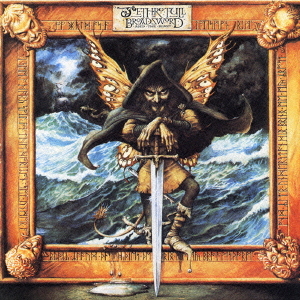
The Broadsword and the Beast is the 14th studio album by rock band Jethro Tull, released on 10 April 1982. The album is a cross between the dominant synthesizer sound of the 1980s and the folk-influenced style that Jethro Tull used in the previous decade. As such, the band's characteristic acoustic instrumentation is augmented by electronic soundscapes, provided by new keyboardist Peter-John Vettese. The electronic aspects of this album would be explored further by the band on their next release, Under Wraps.

Crest of a Knave is the sixteenth studio album by British rock band Jethro Tull, released in 1987. The album was recorded after a three-year hiatus caused by a throat infection of vocalist Ian Anderson, resulting in his changed singing style. Following the unsuccessful electronic rock album Under Wraps, Crest of a Knave had the band returning to a more hard rock sound. The album was their most successful since the 1970s and the band enjoyed a resurgence on radio broadcasts, appearances in MTV specials and the airing of music videos. It was also a critical success, winning the 1989 Grammy Award for Best Hard Rock/Metal Performance Vocal or Instrumental in what was widely viewed as an upset over the favorite, Metallica's ...And Justice for All. The album was supported by "The Not Quite the World, More the Here and There Tour".

Rock Island is the 17th studio album by the British rock group Jethro Tull, released in 1989. The album continued the hard rock direction the band took on the previous effort, Crest of a Knave (1987). The line-up now included Ian Anderson, Martin Barre, Dave Pegg and drummer Doane Perry in his first full recording with the band, although he was already a member of Jethro Tull since 1984. Without a permanent keyboard player, the role was shared by Fairport Convention's Maartin Allcock and former Tull member Peter Vettese.

Catfish Rising is the 18th studio album by the British rock group Jethro Tull, released in 1991. It is the first Tull album to feature keyboardist Andrew Giddings. The album continues the hard rock and blues sound of the previous two albums.
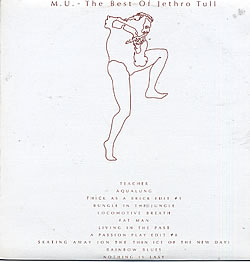
M.U. – The Best of Jethro Tull, released in 1976, is the first proper greatest hits album by Jethro Tull. It spans the years 1969 to 1975. The earlier Living in the Past (1972) compilation mainly dealt with non-album material, but this album only features one previously unreleased song, "Rainbow Blues".

Living in the Past is a double album quasi-compilation collection by Jethro Tull, which contains album tracks, out-takes, the "Life Is a Long Song" EP, and all of their non-LP singles except for "Sunshine Day"/"Aeroplane" (1968), "One for John Gee", "17" and the original version of "Teacher" that appeared in the UK as the b-side of "The Witch's Promise" in 1969. Also included are two live recordings taken from a performance at New York City's Carnegie Hall in November 1970.




















